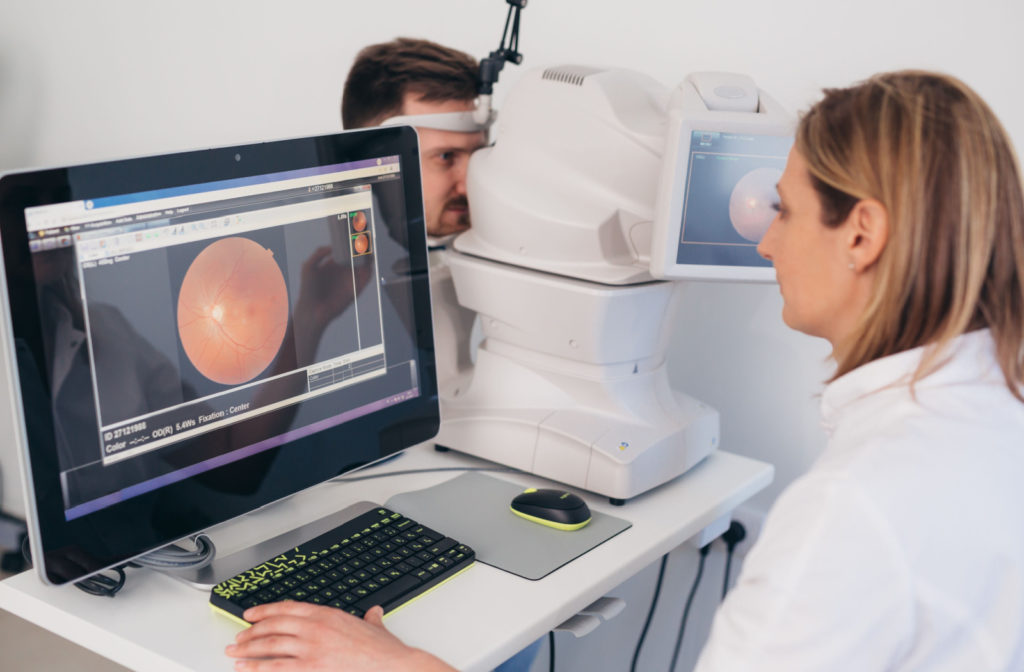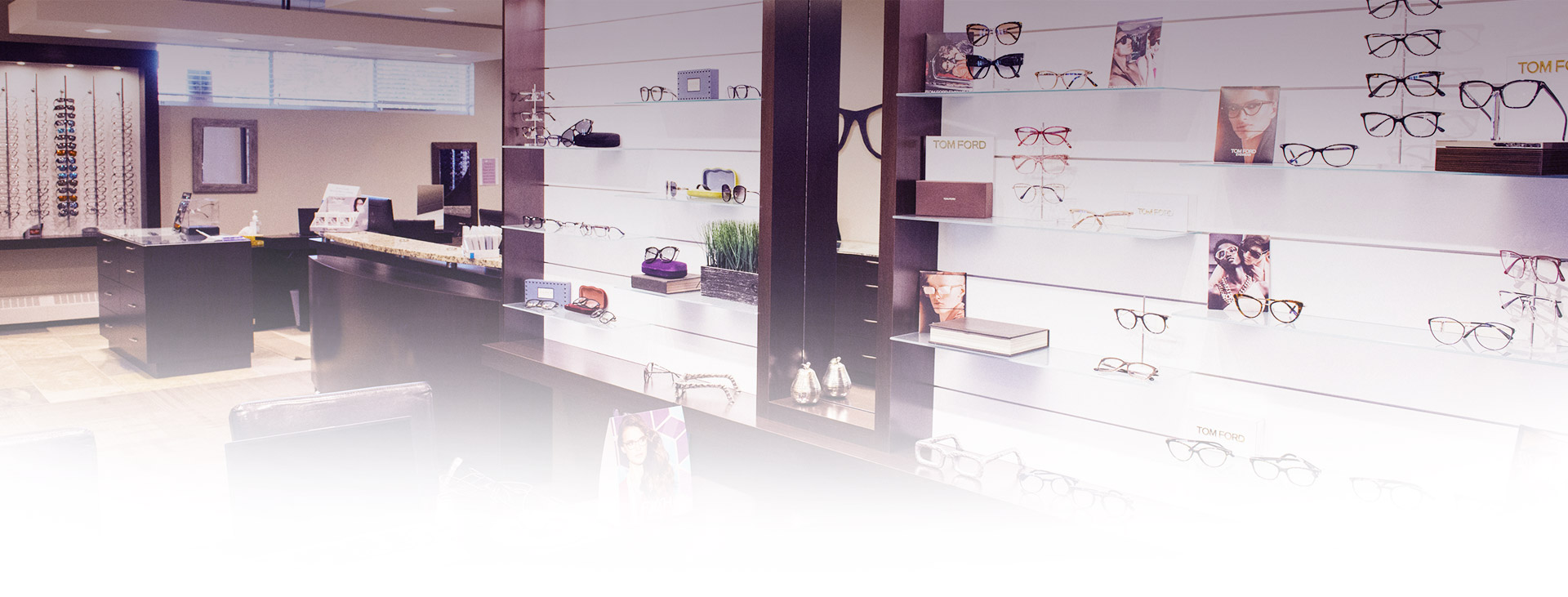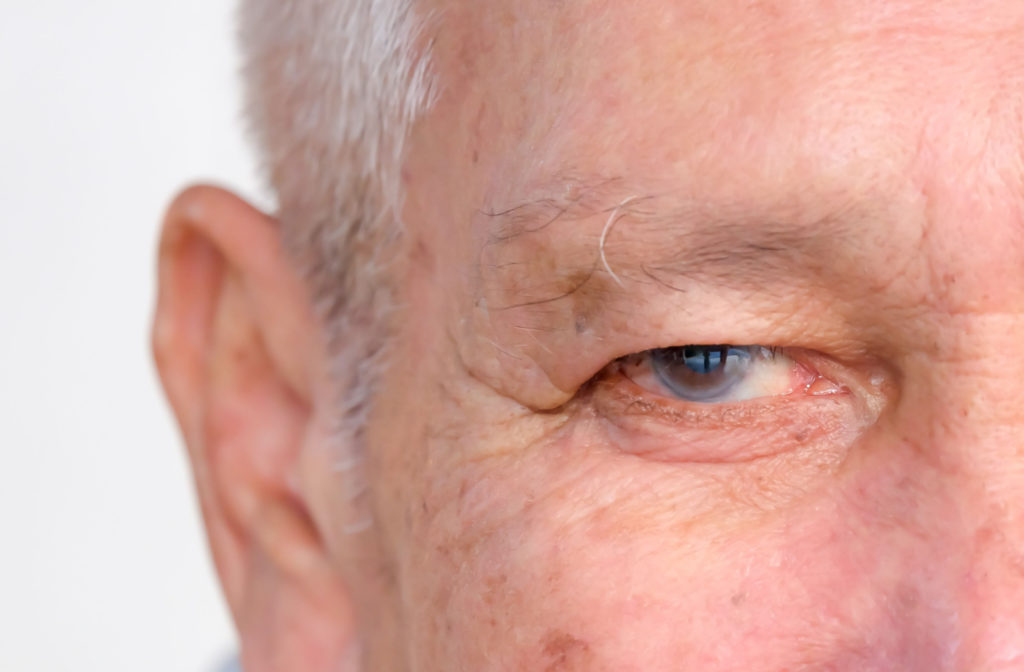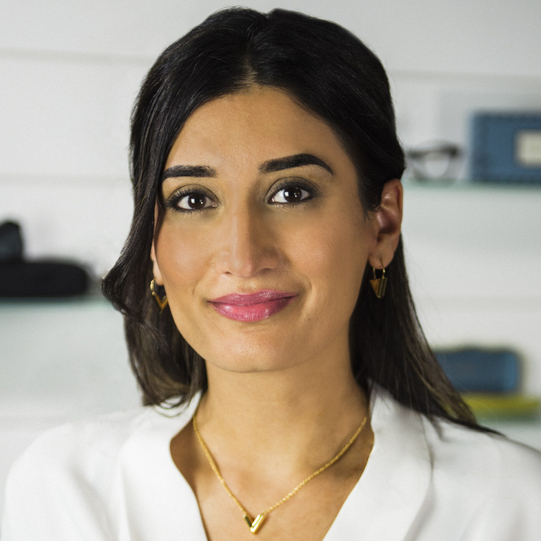As we age, our risk of developing various health conditions greatly increases, one of them being glaucoma. Glaucoma is a progressive eye disease that can lead to vision loss or blindness, making it crucial to diagnose and treat early.
Unfortunately, one of the biggest challenges with glaucoma is that it typically progresses with no noticeable symptoms during the early stages. You may have heard it referred to as “the silent thief of sight,” and this is no idle warning. The first sign of glaucoma is increased eye pressure, however, the first symptom you may notice is loss of peripheral vision. Thankfully, your optometrist has the diagnostic tools to uncover early symptoms that may sneak past you.
What Is Glaucoma?
Glaucoma affects more than 780,000 Canadians and is considered one of the leading causes of blindness, especially in people aged 60 and above. But glaucoma isn’t just a single condition, it’s a whole collection of problems.
The most common types affect your intraocular pressure (IOP), that being the fluid pressure in your eye. This high IOP can damage the optic nerve over time.
- Open-angle glaucoma: Open-angle glaucoma is the most common form of the condition. It occurs when the eye’s drainage canals are clogged, causing gradual pressure buildup in the eye. This type is generally painless and typically progresses slowly, and many people don’t notice any symptoms until the condition has already advanced.
- Angle-closure glaucoma: Angle-closure glaucoma, also called acute glaucoma, is a rare but severe form of the condition. It occurs due to the sudden severe blockage of the eye’s drainage canals, causing a rapid increase in eye pressure. This type is more noticeable, and you may experience severe eye pain, headache, nausea, blurred vision, and seeing halos around lights. If you do, seek immediate medical treatment.
- Normal-tension glaucoma: Normal-tension glaucoma is another rare form that occurs when the optic nerve sustains damage, even though eye pressure levels are normal. It’s essential to have regular eye exams, especially if you have a family history of glaucoma, as normal-tension glaucoma may go unnoticed until significant vision loss occurs.
- Secondary glaucoma: Secondary glaucoma results from other health conditions, such as eye injuries or diabetes. High doses of steroids can also result in this form.
- Congenital glaucoma: Congenital glaucoma affects infants and children, usually resulting from abnormal eye development. Early diagnosis and treatment can prevent vision loss in children with congenital glaucoma.
Recognizing Early Glaucoma Symptoms
The common trait between glaucoma types is how they damage the optic nerve over time. The optic nerve transmits visual information from your eyes to your brain, allowing you to see. When it’s damaged, your vision gradually deteriorates, eventually leading to complete blindness.
When talking about glaucoma, open-angle glaucoma is typically the topic of choice since it accounts for around 90% of all cases. Still, while the first sign of glaucoma is often increased IOP, it’s crucial to note that this may not always be the case.
As the disease progresses, you may notice changes in your vision, such as:
- Loss of peripheral vision (side vision)
- Blurred vision
- Halo or rainbow-like rings around lights
- Narrowed or tunnel vision
- Pain or redness in the eyes
- Nausea or vomiting
Of particular note is loss of peripheral vision as a symptom. When glaucoma damages the optic nerve, it typically starts at the edges. So, while you may not notice your IOP climbing, you may notice the edges of your vision growing dimmer. This is why one way optometrists check for glaucoma is with a visual field test that examines your peripheral vision.
Glaucoma Testing
Your optometrist has many diagnostic tools when looking for glaucoma signs, mainly with a comprehensive eye exam. That’s why it’s essential to get regular check-ups, especially if you’re over 60. During an exam, your optometrist can use a series of tests to evaluate your eye for signs of damage or abnormalities.
- Tonometry: A tonometry test measures the pressure inside your eye, typically using a puff of air or a gentle plunger against the eye. Tonometry is a popular way to diagnose open-angle glaucoma before it begins damaging the optic nerve.
- Visual Field Test: A visual field test measures the health of your peripheral vision. Your optometrist can have you sit at a device that shows you a series of lights. As these lights move around, you click a button whenever you see one. Using this information, you optometrist can create a map of your visual field, looking for blindspots potentially caused by glaucoma.
- Optic Nerve Imaging: Modern diagnostic technology allows optometrists to get a closer look at your eye. Devices such as optical coherence tomography use lightwaves to create a cross-section image of your retina, the layer of cells at the back of your eye where the optic nerve connects. These images can help detect damage to your optic nerve, which can indicate glaucoma.

Glaucoma Treatment
Once you notice the first sign of glaucoma, treatment can begin. The treatment for glaucoma depends on several factors, including the type and severity of the disease. Some common treatments include:
- Eye drops to reduce intraocular pressure
- Laser therapy to improve fluid drainage out of the eye
- Surgery to create a new drainage channel in the eye
Your eye doctor can work with you to develop a customized treatment plan that meets your needs and helps preserve your vision.
Keeping an Eye on Glaucoma
Early detection is the key to successful glaucoma treatment, and eye exams are crucial to detecting the condition before it causes significant damage. People over 60, those with a family history of glaucoma, or those with other health conditions like diabetes or high blood pressure should be especially vigilant in getting regular eye exams, at least 1 every year.
The Visionary Eye Centre team is skilled in diagnosing glaucoma and crafting management plans to suit your needs. Glaucoma doesn’t have to sneak up on you. Book your appointment today!



